Panasonic Lumix FZ150 Review
Panasonic Lumix FZ150
With a 24x zoom and generous range of features, the new FZ150 is a highly convenient package. But does it deliver the image quality to match?
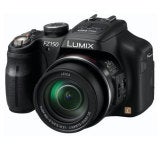
Verdict
Pros
- Massive zoom range
- Image stabilisation works well
- Good movie-recording abilities
Cons
- Lens not the sharpest at wideangle extreme
- Metering prone to overexpose
- Not particularly small or light
Key Specifications
- Review Price: £429.99
- 12.1-megapixels
- 24x optical zoom
- 'PASM' shooting controls
- Creative Control digital filters
- 1080/50p Full HD movie recording
Back in the days of film, end even the early days of digital, superzooms filled a well-defined gap in the market between regular compacts and (D)SLRs – hence why they also became known as ‘bridge’ cameras. However, as the digital market has matured so too has the positioning and perception of this type of camera. 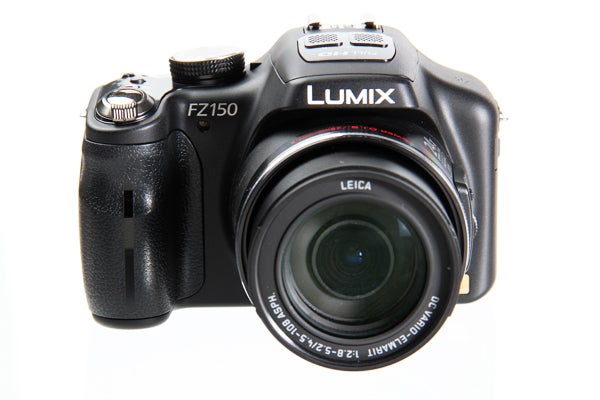
As advanced compacts and, more recently, interchangeable lens compact system cameras have evolved to provide a more DSLR-like experience in a smaller package, superzooms can no longer claim to be the only type of ‘intermediate-level’ or ‘step-up’ camera available. This has led many manufacturers to focus instead on their other core strength; namely, the ability to pack a huge focal range within a single zoom lens.
This trend has been further accelerated by the emergence of dedicated travel compacts in recent years. These are physically smaller than their superzoom cousins, dispensing with the DSLR-like styling in favour of something more pocketable, yet still regularly boast 16x zooms. In response to this new breed of compact, traditional superzooms have extended their reach even further, with most models generally now offering in the region of 24x, 30x or even 35x.
This approach appears to have worked, because far from dying a death, superzoom sales have proved quite resilient in the past few years, with significant numbers of consumers still keen to enjoy the practical benefit of having a large focal range to hand without the need to lug a heavy bag of lenses around.
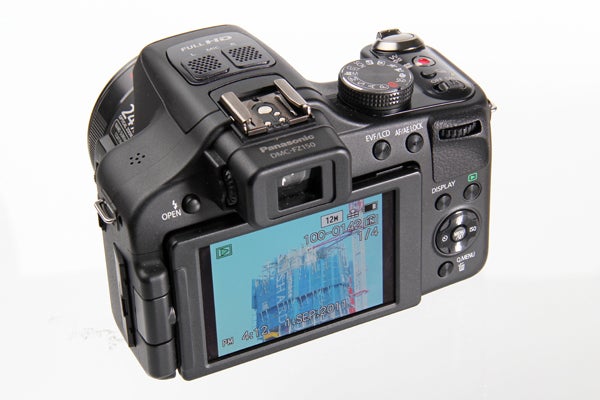
Of course, superzooms aren’t without their inherent problems. Indeed, from a purely optical perspective, trying to cram 18x, 24x or even 30x optical abilities into a single fixed zoom can lead to a loss of sharpness and serious fringing issues.
Does the FZ150 fall into the same kind of traps, or does it provide a solid alternative to a DSLR and a bag of lenses. Let’s take a closer look and find out…
The FZ150 supersedes the FZ100 that was released about this time last year as the new flagship model in Panasonic’s superzoom line-up.
At its heart the FZ150 uses a newly developed 1/2.3in MOS sensor offering an effective resolution of 12.1-megapixels. This actually represents a slight reduction in overall resolution from the 14.1-megapixels of the FZ100. However, given that 1/2.3in is the same size found in the majority of compact cameras – from cheap and cheerful ultra-compacts to more advanced travel compacts – this could well be a good thing.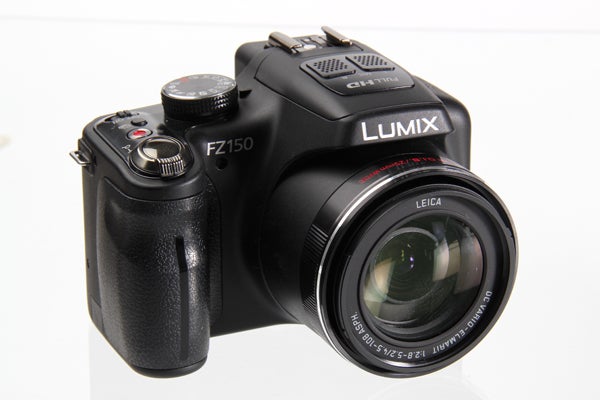
The reason for this is because, in theory at least, it enables the individual light-capturing photodiodes to be larger, which in turn means they are more sensitive to light and less sensitive to noise. At 12.1MP you’ll still be perfectly able to make large, poster-sized prints, yet images shot in low-light are less likely to come out as a grainy, speckled mush lacking any kind of detail.
Using Panasonic’s latest Venus Engine FHD II image processor, the FZ150 can shoot from ISO 100 to ISO 3200 at full resolution, with an expanded High Sensitivity setting of ISO 6400 also available, albeit at a reduced maximum resolution of 3MP.
The default aspect is 4:3, although 3:2, 16:9 and 1:1 are also offered. As all of the alternatives essentially crop from the sensor, overall resolution is reduced when using them. Maximum output at the full 12.1MP in 4:3 is 4320 x 3240 pixels, although resolution at the 4:3 setting can be lowered to 10MP, 7MP, 5MP or even 3MP, with similar reductions available for the alternative aspects. There are two JPEG quality settings: Fine and Standard. In addition to JPEGs the FZ150 is also able to record lossless Raw sensor data, which greatly improves the scope for post-processing.
The new sensor/processor combination is capable of delivering an impressive maximum continuous shooting speed of up to 12fps in full resolution, even though this is limited to a maximum 12 frames. This is a frame faster than the FZ100, although it’s worth bearing in mind that this is, at least partly, due to the smaller file sizes produced by the FZ150 thanks to the drop in resolution. There are also a couple of high-speed burst options, albeit at greatly reduced resolutions.
On the front, the FZ150 is fitted with a 24x, f/2.8-5.2 optical zoom from Leica that offers a focal range of between 25mm and 600mm in 35mm terms. While 24x might seem like a lot, it’s far from being the most powerful superzoom on the market. Fujifilm’s HS20 EXR, for example, offers 30x, while Canon’s SX30IS offers 35x and Nikon’s P500 tops the lot with its whopping 36x optical zoom. All of these models fall within the same kind of price bracket as the FZ150 too.
Beyond this it’s possible to extend the zoom’s reach to 32x using the Intelligent Zoom, with fairly acceptable results so long as you’re not pixel-peeping. The Digital Zoom function, meanwhile, offers a maximum 96x, although at this level of magnification overall image quality soon becomes fairly dreadful – very much for emergencies only.
Given the extended reach of the FZ150, it’s reassuring to know that the lens is fitted with Panasonic’s proprietary – and, we might add, highly effective – Power Optical Image Stabilisation (Power O.I.S) technology. This minimises the effects of camera shake not only at low shutter speeds but also extended focal lengths and works rather well, despite the shortcomings of the lens itself (more on that later).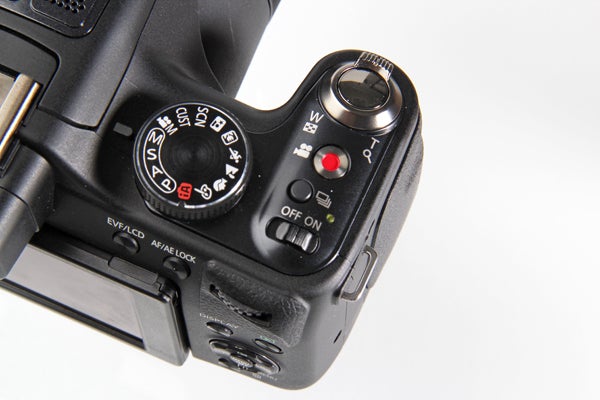
As with the FZ100, the FZ150 offers a zoom control positioned on the lens barrel, which sits alongside an AF On/Off switch and a focus button. Unlike the FZ100 though, the FZ150 benefits from Nano Coating Surface technology to reduce the effects of ghosting and flare.
Befitting its advanced superzoom status, the FZ150 offers the regular quartet of manual and semi-manual shooting modes: Program, Aperture-priority, Shutter-priority and fully Manual. If you’d prefer to let the FZ150 do all the work, then Panasonic’s ever reliable iAuto mode can be called upon along with 18 individual Scene modes. There’s also a 3D option, though you’ll need a compatible monitor to view the results on.
In addition, the FX150 also benefits from a choice of eight Creative Control digital effects: Miniature, Expressive, Retro, High Key, Sepia, High Dynamic, Pin Hole and B&W Film Grain. These effects are easy to use and can also be applied to movies.
Speaking of movies, the FZ150 can record video at up to 1920 x 1080 (or Full HD) at 60 or 50p, with files stored in the space-efficient AVCHD format, though this may limit playback on some devices. Lower-quality movies can be recorded in the more common MP4 format. Sound, meanwhile, is recorded in stereo by default, and unlike the FZ48, the FZ150 also gets an external microphone input.
With its deep finger grip, accentuated zoom profile and wide 52mm lens diameter, the FZ150 follows the same DSLR-like design cues of the FZ range (and indeed other superzooms) in general, but is slightly larger than the FZ48 and with more rounded edges. Overall, it’s not a particularly small camera and will require a dedicated carry case as it isn’t going to fit in any pockets. Indeed, placed next to Panasonic’s recently launched Lumix G3 interchangeable lens compact system camera with a 14-42mm kit lens attached, the FZ150 actually looks quite chunky. At 540g with a battery and card, it’s not overly light either. 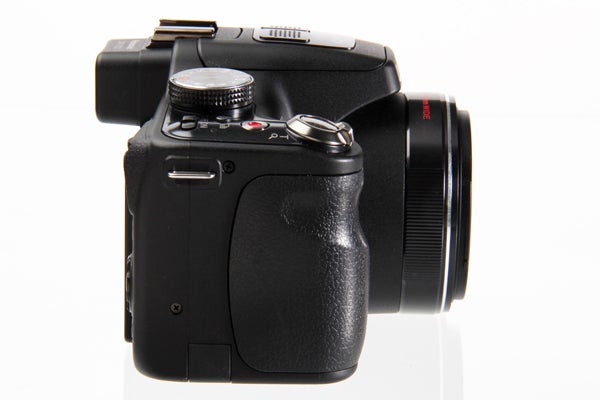
Outer construction is almost entirely of a smooth matt plastic that reminds us of the finish Canon uses on its entry-level DSLR range. The moulded finger grip is deep enough to accommodate two fingers comfortably or three at a push, and is treated to a rubberised finish for extra grip – as is the thumb-rest on the back of the camera.
Unlike FZ models further down the range, the FZ150 also gains some ridges on the metallic lens-barrel guard, which gives the left hand a little something extra to grip onto. It might sound like a small detail, but it’s indicative of the kind of refinements the FZ150, as the flagship FZ model, enjoys over its lesser siblings.
Likewise, the FZ150 also gets a hotshoe mount that can be used to equip the FZ150 with a dedicated flash, should you need a bit more power than the pop-up flash housed just in front of it offers.
Regardless of whether you’re using the lens-mounted zoom control or the spring-loaded rocker that wraps around the shutter button, control remains very precise; feathering the zoom controls we were able to find approximately 65 individual spots between the FZ150’s 25mm and 600mm extremes. Despite the zoom’s large focal range, this allows you to be fairly precise while framing a subject from a stationary position. Ultimately we’d prefer to see a fully manual zoom control, as used on the Fujifilm HS20. Perhaps that’s something we can look forward to from a future update.
Using the mechanical zoom to go from one extreme straight to the other proves to be pretty smooth and quick, with the camera taking just under three seconds in either direction. Should you wish to, you can also use the lens-mounted switch to manually control focus with.
Autofocus performance has seen a boost, with Panasonic claiming the FZ150’s AF system is based on the same super-fast technology used by the G3. Certainly in good light focus is near instantaneous, with performance in reduced light far from sluggish too. When light levels drop beyond this performance does take a knock, as might be expected, with an AF Assist helping out when things become too dark for the AF module to function on its own accord. 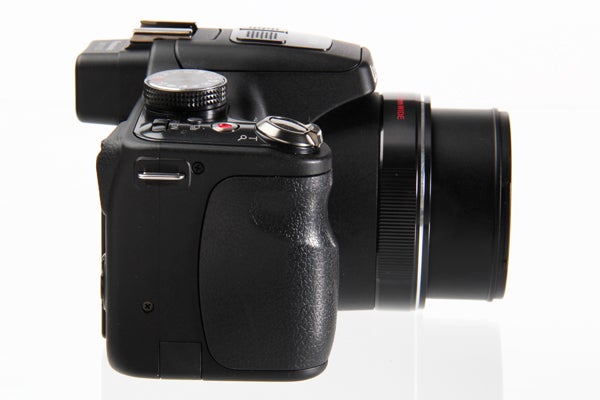
Start-up speed is around the three second mark; hardly instantaneous, but comparable to other cameras in this class. There’s a dedicated Drive Mode button on top of the camera, from where it’s possible to select a range of options: single-shot, 2fps and 5.5fps. You can record all of these as either JPEGs or Raw, although there’s no provision to record both simultaneously. These are supplemented by a JPEG-only 12fps continuous setting, and a couple of hi-speed options: 40fps at 5MP, and 60fps at 2.5MP, both of which are, again, JPEG only.
Turning to buffer performance, at 2fps we were able to record over a 100 full-res JPEGs at full resolution without any slowdown. At 5.5fps we were able to record approximately 20 full-res JPEGs at full resolution before the camera slowed to around the 2fps mark. At 12fps the camera can only record a maximum 12 full-res JPEGs before coming to a halt while the buffer clears. Switching over to Raw recording, we were able to record 15 images at 2fps before the camera slowed. This fells to 12 images at 5.5fps.
On the back of the FZ150 sits a vari-angle TFT screen that swings out 180-degrees before rotating through 27-degrees. This enables it to be used for self-portraits as well as extreme high- and low-angled photography. At 3-inches and 460k-dots the 3:2 aspect screen is plenty sharp enough and allows for some generous viewing angles too. While it remains useable in bright outdoors light, it does struggle somewhat in direct sunlight.
Thankfully, this is where you can call upon the built-in Electronic Viewfinder. At 201k-dots (equivalent) it’s a bit pokey though, at least in comparison to the 1.4million-dot (equivalent) electronic viewfinder fitted to the Lumix G3.
Before we’re accused of being overly critical, it’s important that we point out that our review sample was a pre-production model, which means that firmware hasn’t yet been finalised and some of the issues we’ve identified below could well be ironed out before the camera ships in mid-October. 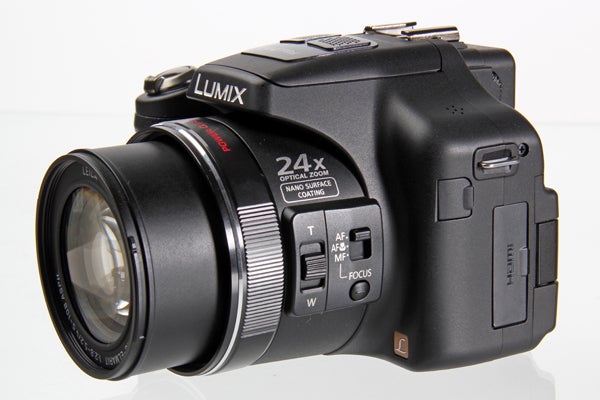
Equally, it’s also worth bearing in mind that, despite the FZ150’s DSLR-like styling and physical dimensions, it still employs a (1/2.3in) compact-sized sensor at its heart. In this respect it’s essentially just another compact, albeit one with a far-reaching lens on the front. Given this, and despite some niggly sharpness and colour issues – which we’ll detail shortly – the FZ150 delivers an overall level of image quality that we suspect the vast majority of owners will be more than happy with.
Indeed, compared to some other superzooms we’ve reviewed recently the FZ150 scores quite well in the image quality stakes. It’s not perfect by any means though and compared to cameras of a similar size that use larger sensors – Panasonic’s Lumix G3, for example – the FZ150 doesn’t even get close. Obviously it would be unfair to judge the FZ150 and the G3 side by side as they are different types of camera with their own individual strengths and weaknesses, but given that the price differential between the two isn’t all that great (less than £100), it’s certainly food for thought.
We don’t mind admitting that the first time we took the FZ150 for a walk we were actually left a little disappointed with the results, with a lack of sharpness and muted colour both figuring highly on our list of concerns. Perhaps we were just having an off day, because on subsequent outings we’ve been left much more impressed with what the camera can do.
Given the huge focal range, images aren’t always the sharpest, especially when the FZ150 is used at its wideangle extreme. At middling focal lengths though, the camera does deliver better results, especially when combined with an aperture ‘sweet spot’ of around f/5.6-f/8. Despite the overall drop in resolution the FZ150 resolves perfectly acceptable levels of detail, although this can suffer from heavy JPEG processing at higher sensitivities.
Panasonic claims to have improved the noise reduction process at both the sensor capture and image processing stages for better low-light performance. While we’re happy to confirm that the FZ150 does indeed compare favourably to other compacts at low to mid-range sensitivity settings of ISO 100-400, and easily outperforms its predecessor too. However, when pushed beyond ISO 800 performance can be seen to drop. Slightly better results can be achieved by recording in Raw and processing your own images of course, but this isn’t something that’s going to appeal to everyone.
Colour output when shooting JPEGs will differ quite dramatically depending on what Photo Style (colour profile) you opt for. Used on the Standard setting we found resultant images to be a little flat, especially in flat or dim light. The Vivid setting, in complete contrast, is often a bit too vivid and can make things look unnatural. Thankfully it’s possible to boost the former or tone the vibrancy down a notch or two on the latter via the custom settings. It’s certainly worth experimenting with.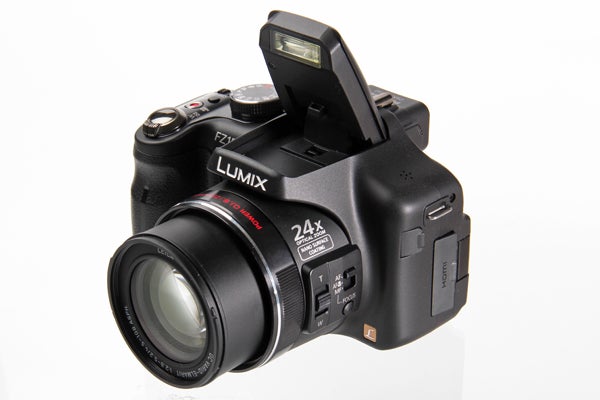
Metering is generally pretty accurate when the camera’s used outdoors in cloudy or bright-but-even conditions. That said, we did notice a tendency for the FZ150 to occasionally overexpose when used in direct sunlight, which can result in blown highlights and skies that come out looking more turquoise than blue. Hopefully, this is something that will be tweaked before the camera is in the shops.
Used on the Auto White Balance setting the FZ100 is generally quite accurate, although there is a tendency for images to be a little on the cool side – something we’ve noticed with other Panasonic compact models.
Verdict
With its wide focal range and generous feature set, the FZ150 is primarily a camera of convenience. At 24x it doesn’t quite match some other superzooms in terms of telephoto reach, however it does deliver good image quality and solid hi-def movie recording abilities. If convenience tops your list of priorities and a 24x optical zoom is sufficient for your needs then the FZ150 merits a closer look.

As this 100% crop shows ISO 100 is sharp and noise-free, although processing is far from subtle

ISO 200 shows very little difference from the base sensitivity

By ISO 400 a hint of softening has begun to creep in

At ISO 800 the image is noticeably softer
At ISO 1600 detail has, for the most part, been lost to noise reduction processing

At the top setting of ISO 3200 the FZ150 produces fairly unusable images

At its 25mm extreme the FZ150’s 24x lens can be a little on the soft side..

…as this 100% crop of the above image shows

Panasonic’s proprietary Power Optical Image Stabilisation technology, on the other hand, does a good job of minimising camera-shake, even at the FZ150’s telephoto extreme

When it all comes together, the FZ150 is capable of producing good quality images

Having full PASM control over the camera allows you to take charge over the shutter speed for creative effect

Macro performance impresses too

The Creative Style digital filters are always fun to play around with

Sadly though, there is an occasional tendency for the FZ150 to overexpose

We’ve no idea quite what’s going on here, but thought you’d like to see it anyway
Trusted Score
Score in detail
-
Value 7
-
Design & Features 8
-
Image Quality 7
-
Build Quality 8

